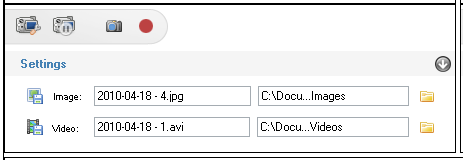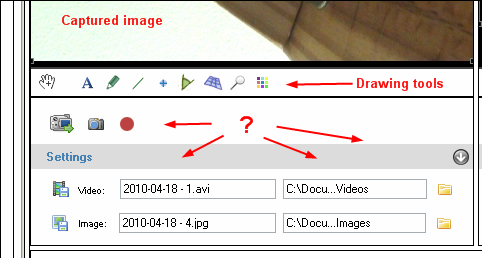Yes, forgot to mention that some thinking is also needed to handle the various cases of camcorders / screens.
This is probably on of the first thing to discuss.
So, basically as a user, we would be able to use the "View" menu to prepare the workspace : select one capture screen, select two capture screens, select a hybrid mode where you have one capture screen and one playback screen.
We need to clear up the user interactivity here because there are many possible scenarios. I'll give them names just in case we need to refer to them later.
Possible screen combinations :
S1 : 0 screen.
S2 : 1 playback screen.
S3 : 2 playback screens.
S4 : 1 capture screen.
S5 : 2 capture screens.
S6 : 1 playback screen + 1 capture screen.
Possible number of devices connected:
C1 : 0 camcorder
C2 : 1 camcorder
C3 : 2 camcorders
C4 : 3 or more camcorders
There are two kind of interactions here:
1 - The user plugs a camcorder to the computer. What do we do depending on the current screens cofiguration + number of camcorders already connected ?
2 - The user changes screen configuration. What do we do depending on the number of camcorders connected ?
Each and every combination will need to be taken into account at some point in the code, so it would be really nice to have a consistent and sensible behavior.
Examples for interaction 1 - The user plugs a camcorder to the computer.
S1 (0 screen) : show a dialog box inviting the user to display a capture screen. If there are already other connected devices, display a list to choose from ?
S2 (1 playback screen) : Should we display a dialog box ? Should we create a capture screen automatically ?
S3 (2 playback screens) : Should we display a dialog box ?
S4 (1 capture screen) : Is it already linked with another connected device ? if not we should directly link the device with this screen. If yes, what do we do ?
S5 (2 capture screen) : Is there an unused screen among the two ? Do we link the device with it automatically ?
etc.
OK, maybe we can group these and just need to define a globally consistent and intuitive behavior for:
- There are not any capture screen available to link the camcorder to.
- There is at least one empty capture screen that we could use.
- There is more than one camcorder that could be linked with a capture screen.
- There is more camcorders connected that we can handle.
Please anyone add your thoughts on what the behavior should be !


